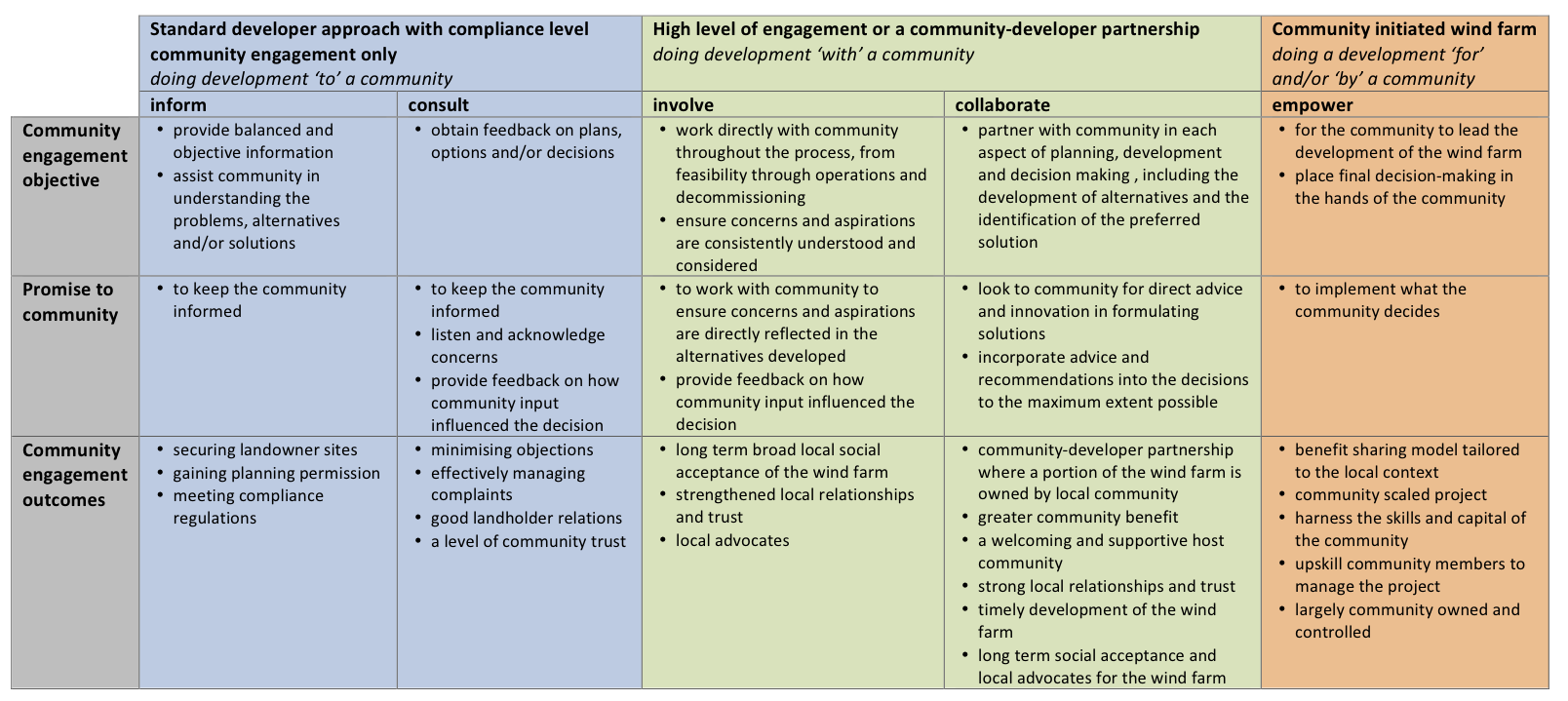Authors: Taryn Lane & Jarra Hicks
How you communicate with the local community and stakeholders can be crucial to your wind project's success. Here we look into how you can plan ahead and make the most of each opportunity to engage with community members and key stakeholders.
Also refer to Engaging the wider community section and Webinars.
Best practice community engagement requires going beyond what is necessary to meet planning permit guidelines and compliance requirements and working to ensure that wind developments have a social license to operate for the full life cycle of the project. This is an active and ongoing process that takes ongoing negotiation and engagement at the community level.
Although community engagement has become a commonly used term, its implementation as a practice has been highly uneven and has encompassed varying degrees of commitment to genuine participation in directing the process and outcomes of development efforts.
A common way of conceiving these varied levels of participation is the International Association for Public Participation’ Spectrum of Public Participation (modified in table below) that positions practices along a spectrum from simply informing, through to empowering, in the process of engagement. This spectrum reflects the different degrees of influence and control given to the community through participation in planning and development.
Thus, community engagement can cover a range of activities, reflecting different desired depth of engagement. Paying close attention to which of these depths of engagement is chosen, and why, is an important aspect of designing a community engagement approach.
The table below introduces three different depths of community engagement with wind development, what these mean and what likely outcomes are. The table compares community engagement approaches typical to a conventional wind developer, a high engaged wind developer (including partnerships with communities) and community-initiated and community-led projects. Note that outcomes are cumulative from left to right (click on thumbnail to expand table).

Table: Community engagement spectrum for three development models
When local communities are empowered to play a role in renewable energy projects, be it selecting local projects for a community grant or a benefit sharing model appropriate for their unique context, they are able to take part in reducing climate change over and above what they can achieve through domestic-scale energy savings measures.
Good community engagement leads to having local advocates for the project. Advocacy organisations can support communities to engage in local advocacy in a way that developers have a limited capacity to. Projects also allow communities to take control of their energy supply, demonstrating commitment to renewable energy and proving to government that there is grassroots support for renewable energy and climate change policies. This has a tangible impact on good policy conditions for wind power development.
